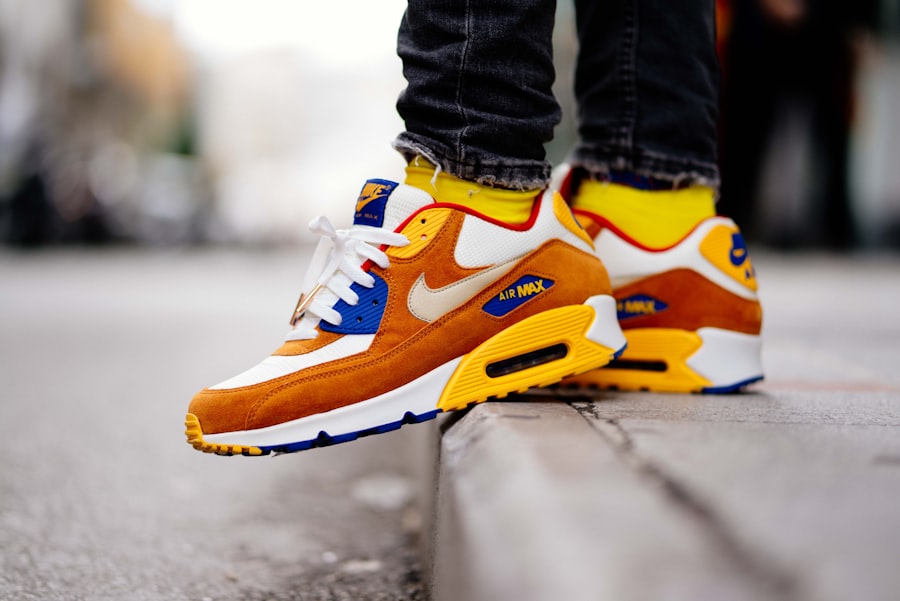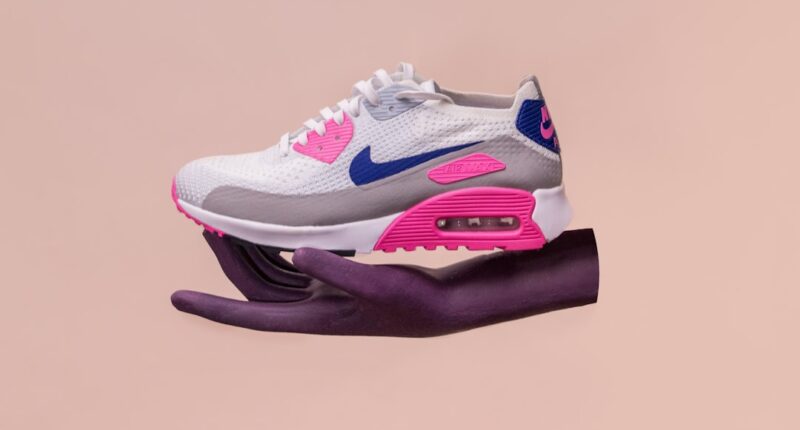In the ever-evolving world of footwear, sneakers have transcended their original purpose as mere athletic gear to become a cultural phenomenon. The Ultimate Sneakers Database serves as a comprehensive repository for sneaker enthusiasts, collectors, and casual wearers alike. This extensive database not only catalogs a vast array of sneaker models but also provides insights into their design, history, and cultural significance.
With the rise of sneaker culture, fueled by social media and celebrity endorsements, the demand for information about sneakers has surged. The Ultimate Sneakers Database aims to meet this demand by offering a user-friendly platform where individuals can explore the rich tapestry of sneaker history and discover the latest trends. The database is meticulously organized, allowing users to search for sneakers by brand, model, year of release, and even colorway.
This level of detail ensures that both seasoned collectors and newcomers can find exactly what they are looking for. Additionally, the database features articles, interviews, and reviews that delve into the stories behind iconic sneakers and the designers who created them. By providing a wealth of information in one accessible location, The Ultimate Sneakers Database not only celebrates the artistry of sneaker design but also fosters a deeper appreciation for the cultural impact these shoes have had over the years.
Key Takeaways
- The Ultimate Sneakers Database is a comprehensive resource for sneaker enthusiasts, collectors, and investors.
- Sneakers have evolved from athletic footwear to a fashion statement, with a rich history dating back to the 19th century.
- The database provides users with tools to search, compare, and track sneaker prices, releases, and trends.
- Top sneaker brands like Nike, Adidas, and Converse have iconic designs that have become timeless classics.
- Sneaker trends and styles have evolved through the decades, from the minimalist designs of the 70s to the bold and colorful styles of the 90s.
History of Sneakers and Their Evolution
The Origins of Sneakers
The history of sneakers is a captivating journey that dates back to the late 18th century when the first rubber-soled shoes were created. These early designs were primarily utilitarian, intended for sports and outdoor activities. However, it wasn’t until the early 20th century that sneakers began to gain popularity among athletes and the general public.
The Rise of Iconic Brands
The introduction of brands like Keds and Converse revolutionized the footwear industry, as they produced shoes that combined comfort with style. The iconic Converse Chuck Taylor All-Star, released in 1917, became synonymous with basketball culture and laid the groundwork for future sneaker designs. As the decades progressed, sneakers evolved significantly in both function and fashion.
The Evolution of Sneaker Technology and Culture
The 1970s marked a turning point with the emergence of running as a popular sport, leading to innovations in sneaker technology. Brands like Nike and Adidas began to dominate the market by introducing performance-enhancing features such as cushioned soles and breathable materials. The 1980s saw sneakers transition from athletic wear to streetwear, largely influenced by hip-hop culture and celebrity endorsements. This era birthed iconic models like the Nike Air Jordan, which not only changed the landscape of basketball shoes but also established sneakers as a status symbol.
Sneakers in Modern Fashion
Today, sneakers are an integral part of global fashion, with collaborations between high-end designers and athletic brands pushing the boundaries of creativity and style.
How to Use The Ultimate Sneakers Database

Navigating The Ultimate Sneakers Database is designed to be an intuitive experience for users of all levels of expertise. Upon entering the platform, users are greeted with a clean interface that allows for easy browsing through various categories. Whether one is searching for a specific sneaker model or simply exploring new releases, the search functionality is robust and efficient.
Users can filter results based on criteria such as brand, release date, or even specific features like color or technology used in the shoe’s construction. This level of customization ensures that users can quickly find what they are looking for without sifting through irrelevant information. In addition to its search capabilities, The Ultimate Sneakers Database offers a wealth of educational resources that enhance the user experience.
Each sneaker entry includes detailed descriptions that cover not only the shoe’s specifications but also its historical context and cultural significance. Users can also access articles that discuss trends in sneaker design, interviews with industry insiders, and tips for sneaker maintenance and care. For those interested in collecting or investing in sneakers, the database provides valuable insights into market trends and pricing information.
By combining comprehensive data with engaging content, The Ultimate Sneakers Database serves as an essential tool for anyone passionate about sneakers.
Top Sneaker Brands and Their Most Iconic Designs
| Brand | Most Iconic Design |
|---|---|
| Nike | Air Jordan 1 |
| Adidas | Stan Smith |
| Converse | Chuck Taylor All Star |
| Puma | Suede |
| Reebok | Classic Leather |
The sneaker industry is dominated by several key players whose innovative designs have left an indelible mark on both sports and fashion. Nike stands out as one of the most influential brands in sneaker history, known for its cutting-edge technology and marketing prowess. The Nike Air Max series revolutionized sneaker design with its visible air cushioning technology, providing both comfort and style.
Another iconic model is the Nike Air Jordan 1, which not only transformed basketball footwear but also became a cultural icon through its association with Michael Jordan and hip-hop culture. Adidas is another powerhouse in the sneaker world, renowned for its commitment to quality and performance. The Adidas Superstar, originally designed as a basketball shoe in the 1970s, gained immense popularity in the 1980s thanks to its adoption by hip-hop artists and streetwear enthusiasts.
Similarly, the Adidas Yeezy line, created in collaboration with Kanye West, has redefined luxury sneakers with its unique designs and limited releases. Other notable brands include Puma, New Balance, and Reebok, each contributing their own iconic models that have shaped sneaker culture over the years. These brands not only focus on performance but also emphasize style and individuality, making their sneakers highly sought after by collectors and fashion enthusiasts alike.
Sneaker Trends and Styles Through the Decades
Sneaker trends have evolved dramatically over the decades, reflecting broader cultural shifts and societal influences. The 1980s marked a significant turning point in sneaker fashion as hip-hop culture began to rise in prominence. Sneakers became synonymous with self-expression and individuality during this era, leading to bold colorways and unique designs that captured the spirit of youth culture.
Brands began collaborating with artists and musicians to create limited-edition releases that appealed to a growing audience eager to showcase their personal style. The 1990s introduced a wave of technological advancements in sneaker design, with brands focusing on performance features such as enhanced cushioning and support systems. This decade also saw the emergence of streetwear as a dominant fashion trend, further blurring the lines between athletic footwear and everyday wear.
As we moved into the 2000s and beyond, sustainability became a key focus within the industry, prompting brands to explore eco-friendly materials and production methods. Today’s sneaker trends reflect a blend of nostalgia for retro styles alongside innovative designs that prioritize comfort and functionality. The cyclical nature of fashion ensures that past trends continue to influence contemporary designs while paving the way for future innovations.
Sneaker Collecting and Investing Tips

The Role of Rarity and Condition
Rarity plays a crucial role; limited-edition releases or collaborations often command higher prices due to their scarcity. Additionally, condition is paramount; sneakers kept in pristine condition or those still in their original packaging tend to fetch higher resale values.
Staying Informed and Diversifying Your Collection
Another important aspect of sneaker collecting is staying informed about market trends and upcoming releases. Following reputable sneaker news outlets or joining online communities can provide valuable insights into which models are gaining traction among collectors. It’s also wise to diversify one’s collection by investing in various brands and styles rather than focusing solely on one niche.
A Recipe for Success
Ultimately, successful sneaker collecting requires a combination of passion, knowledge, and strategic thinking. By understanding the factors that influence value, staying informed, and diversifying your collection, you can navigate this market successfully and enjoy the many rewards that sneaker collecting has to offer.
Sneaker Maintenance and Care Guide
Proper maintenance is essential for preserving the longevity and appearance of sneakers, especially for collectors who want to maintain their investment’s value. Cleaning techniques vary depending on materials; leather sneakers may require specialized cleaners while canvas shoes can often be machine-washed. Regularly removing dirt and grime not only keeps sneakers looking fresh but also prevents material degradation over time.
For those who own high-end or limited-edition models, investing in protective sprays can help shield against stains and water damage. Storage is another critical aspect of sneaker care that should not be overlooked. Keeping sneakers in their original boxes or using dedicated storage solutions can protect them from dust and sunlight exposure that may cause fading or deterioration.
Additionally, using shoe trees can help maintain their shape when not being worn. For collectors who frequently rotate their footwear, it’s advisable to allow shoes to air out between wears to prevent odor buildup and material breakdown. By implementing these maintenance practices, sneaker enthusiasts can ensure their prized possessions remain in excellent condition for years to come.
Future of Sneaker Technology and Design
As we look toward the future of sneaker technology and design, it is clear that innovation will continue to play a pivotal role in shaping the industry. Advances in materials science are paving the way for lighter, more durable sneakers that offer enhanced performance without sacrificing comfort or style. Brands are increasingly exploring sustainable materials such as recycled plastics and organic fabrics in response to growing consumer demand for eco-friendly products.
This shift not only addresses environmental concerns but also opens up new avenues for creativity in design. Moreover, technology integration is set to redefine how we interact with our footwear. Smart sneakers equipped with sensors could provide real-time data on performance metrics such as distance traveled or calories burned, appealing to fitness enthusiasts seeking personalized insights into their workouts.
Additionally, customization options powered by 3D printing technology may allow consumers to create bespoke designs tailored to their preferences. As we move forward into this exciting era of innovation, it is evident that sneakers will continue to evolve beyond mere fashion statements into multifunctional tools that enhance our daily lives while reflecting our individual styles.









